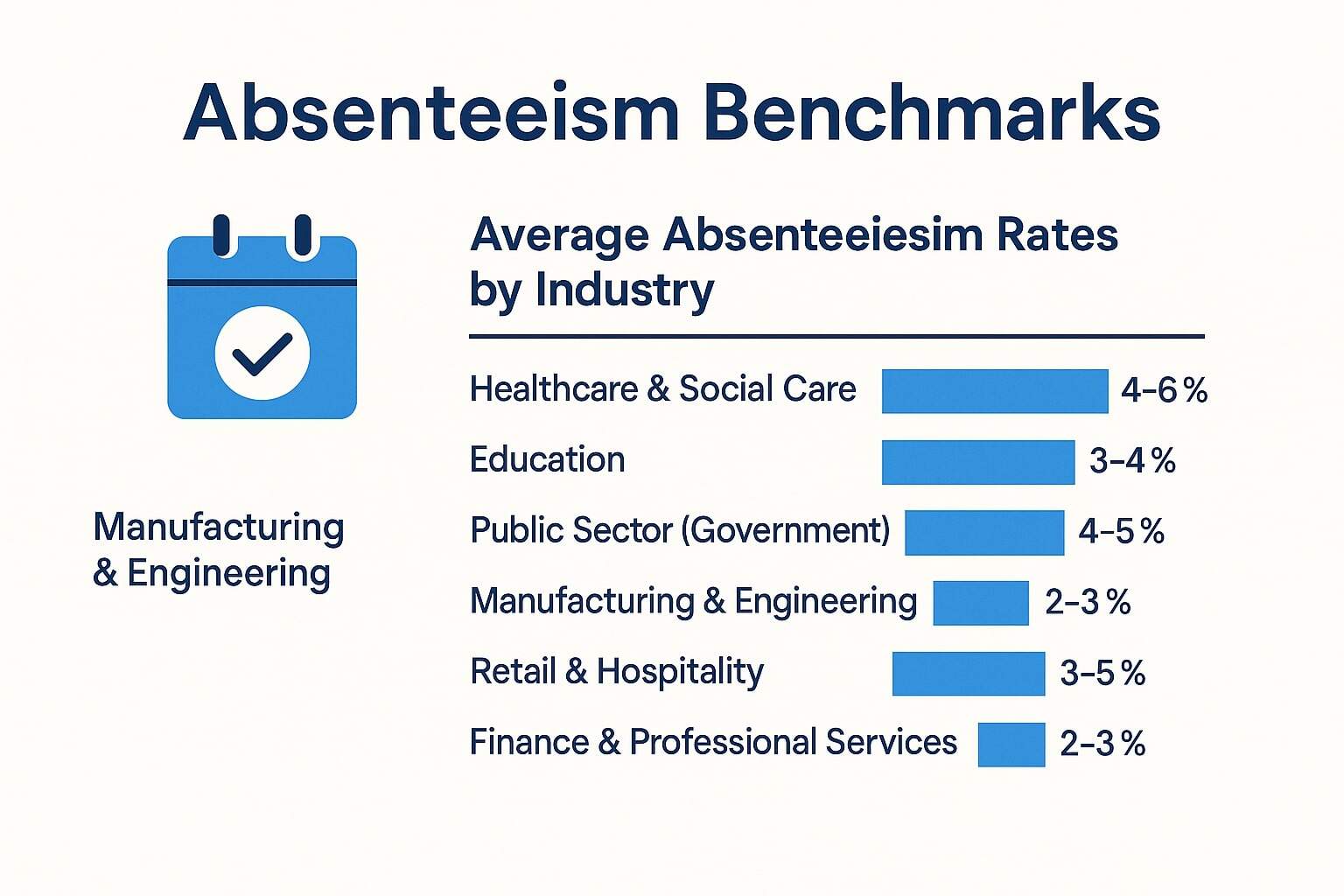What Causes Employee Burnout?

One of the most common dangers to an employee’s mental health is becoming burnt out. Burnout is particularly dangerous because anyone can succumb to it in a relatively short amount of time.
Burnout is a type of physical, mental, and emotional exhaustion that occurs when an employee overexerts themselves for a prolonged period, without adequate rest. Without taking proper breaks, it’s difficult for a person to consistently approach their work with enthusiasm and motivation. When an employee can step away from their work for sufficient amounts of time, they’re able to return to it refreshed and with a renewed sense of purpose.
Job related burnout can present itself in a number of ways, such as increased irritability, decreased productivity, less engagement with work, and, ultimately, being absent from work.
Though it can happen for a variety of reasons, let’s take a look at the main causes of burnout and how you can potentially deal with it as well as prevent employee burnout from happening in the first place.
Understanding Employee Burnout
Definition of employee burnout
Employee burnout is a state of emotional, mental, and physical exhaustion caused by prolonged stress, overwork, and lack of balance in life. It manifests as a syndrome that can lead to feelings of hopelessness, detachment, and cynicism towards work and life. The World Health Organization (WHO) recognizes employee burnout as an occupational phenomenon, highlighting its severe consequences on both mental and physical health. This acknowledgment underscores the importance of addressing the causes of burnout to maintain a healthy and productive workforce.
How common is employee burnout?
Employee burnout is a widespread issue affecting millions of workers globally. Recent surveys reveal that one in five employees experience burnout at work, with 45% reporting feelings of stress or being overwhelmed. The prevalence of burnout is notably higher in certain industries, such as healthcare, technology, and finance, where high pressure, long hours, and intense workloads are common. These statistics underscore the urgent need for effective stress management and burnout prevention strategies in the workplace.
Impact of employee burnout on mental health
The impact of employee burnout on mental health is profound, often leading to anxiety, depression, and even suicidal thoughts. Chronic workplace stress can also contribute to serious physical health problems, including cardiovascular disease, diabetes, and obesity. Beyond the workplace, burnout can spill over into an employee’s personal life, causing strained relationships, decreased productivity, and a lower overall quality of life.
Addressing the causes of burnout is crucial not only for the well-being of employees but also for the health of the organization as a whole.
A poor work/life balance
The most common reason for an employee becoming burnt out is a poor work/life balance and unrealistic expectations. This is the result of spending too much time working, or thinking about work, and not taking enough time away from it.
The main cause of this imbalance is when employees neglect to take time off when they need it most. Worse still, some employees may fail to use all of their annual leave allowance for a given year, letting it roll over into the following year. However, a poor personal life balance can be exacerbated by habits like working at their desk through their lunch break and frequently staying way past their official finishing time.
The first reason for an uneven personal life balance is an employee consistently having too high a workload, or unclear job expectations, leading to job burnout. Now, on one hand, this could be down to your company. In some cases, it can’t be helped, due to you being short-staffed, while in others it may be a matter of distributing work more evenly among staff.
On the other hand, an employee could be responsible for their taxing workload by willingly taking on too much. This is especially likely if they’re the type of person to put themselves forward for everything – or can’t say no when one of their colleagues asks for help.
The most effective way to overcome burnout is to keep an eye on how much holiday each of your employees has taken. You can do this by periodically looking at your annual leave calendar, to see who’s got some time off booked, coupled with keeping track of how much holiday each employee has outstanding. Better still, make use of leave management software that gives you this information at a glance, so you can instantly see which of your staff may be on the verge of burning out. Armed with this info, you can then recommend, or even prescribe, that an employee take some time off. Additionally, taking proactive steps to prevent burnout is crucial for maintaining a healthy and productive workforce.
Poor workplace culture
Similarly, on a related note, while a poor work/life balance could be self-inflicted, it could also be caused by your workplace culture. If your company is one in which working long hours is seen as a badge of honour, some employees may be reluctant to go home on time. Worse still, if frequently taking time off isn’t looked upon favourably, then some employees may be loath to make proper use of their holiday allowance and could suffer from burnout as a result. This could especially be the case if someone is new to the company and wants to prove themselves or there’s pressure to hit consistently hit certain targets.
Poor leadership or people leaders can contribute to burnout by making employees feel unsupported and alone, without anybody they can talk to for key items like blockers, personal life or career progression. This can cause high levels of employee burnout that can lead to increased turnover rates and workers with high burnout levels feel undervalued, impacting their sense of belonging in the organization. Employers should help identify low-priority goals for their employees to prevent overwork and feel rewarded when taks have been achieved.
Another concept is regarding social activities which brings employees together and creates a feeling of belonging, building social bonds among employees can help create a supportive work environment and reduce stress and therefore burnout.
In such a scenario, the desired change needs to come from the top down. Management not only needs to encourage their staff to take time off but lead by example in using their annual leave as well. When staff see their team leader leaving at a reasonable time and taking regular breaks from the office, they’ll be more inclined to do the same. Generally, employers need to change the policies and workplace cultures that breed burnout, they can do this by enabling organizational leaders to listen to their employees before implementing programs designed to help.
These changes can actually improve performance within the organisation as a whole, it was found in a recent study, that the financial burden of work-related stress and burnout in the U.S. is approximately $300 billion per year.
Personal life issues
Another reason an employee could come to suffer from burnt out is having a lot going on in their personal lives. This could stem from a large variety of things, but some common examples include relationship problems, events centred around children, personal health issues, and medical problems involving family members – to name but a few. Additionally, certain personality traits, such as neuroticism, conscientiousness, and introversion, can make individuals more susceptible to burnout, especially in demanding work environments.
In such cases, an employee’s home isn’t quite the sanctuary they need to escape to after a day of work and that they can return from refreshed the next day. In fact, it’s possible that an employee might spend more time at work to escape what’s going on at home.
On the flip side, employees may just need some time off work to de-stress and clear their heads, self-care days in addition to the regular annual leave can encourage this behavior as well as no-email policies on weekends to promote work-life balance.
Dealing with burnout stemming from personal problems can be tricky, as they’re under no obligation to discuss it with anyone. The best you, or HR personnel, can do is to ask how they are feeling, if you sense something is wrong, and make it clear you’re there to support them. This could include suggesting, or even mandating, that they take a few days off to rest and recuperate – even without knowing the full details of their situation.
Signs and Symptoms of Burnout
Physical symptoms
Physical symptoms of burnout can manifest in various ways, including:
-
Chronic fatigue and exhaustion
-
Insomnia and sleep disturbances
-
Headaches and migraines
-
Digestive problems and stomach issues
-
Muscle tension and pain
-
Weakened immune system
These physical symptoms are often accompanied by emotional and mental signs, such as feelings of hopelessness, detachment, and cynicism towards work and life. Employees experiencing burnout may also show behavioral changes, including increased absenteeism, tardiness, and decreased productivity. Recognizing these symptoms early can be key to preventing burnout and promoting a healthier, more balanced work environment.



